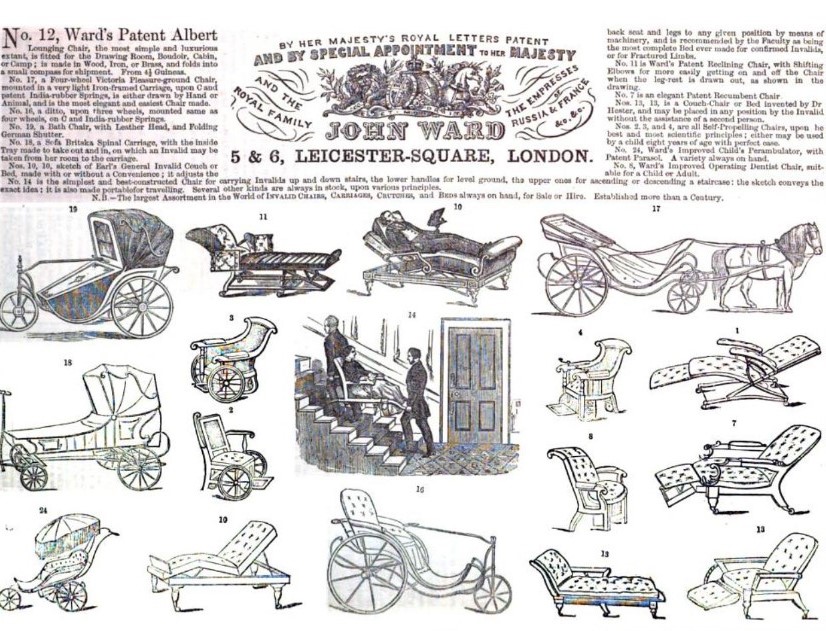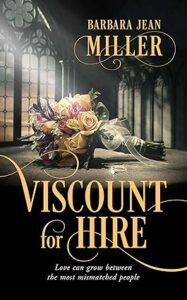|
Moniker/Name
MaryCade
Source of Question
Just curious
Your Question
Recently I’ve read two Regencies in which “sleeping chaises” (vehicles not furniture) were mentioned. No actual descriptions of the *beds* were given so I’m not able to visualize. And I’ve been unable to find a description and/or a drawing. I was wondering if it was rather like a pulldown train compartment bed. Was wondering if perhaps you could satisfy my curiosity. Thanks.
|
Thank you for the question, Marycade, and for being a Regency Reader!
I found one mention of a sleeping carriage in British newspapers dated 1817, referencing an ill woman who had been sent to a Spa town in a specially constructed sleeping carriage. I searched using a variety of terms, and was promptly shut down by the “no search results” of disappointment.
My other searches through historical sources were not much more help. It was not unusual for people to sleep in an overnight coach, but most commercial coaches were packed full so that it would’ve certainly been upright as many do today on planes, trains, and buses (except for first class sleeper cars/cabs). Sleeping coaches or cars (Trains) did become common in the late 19th century, and there have certainly been a variety of train seating that can be convertible into a bed.
A special order by a wealthy traveler would have, however, some contemporary references to commission a custom build. In particular, they could have looked to the design and technology undergoing changes to accommodate individuals who had difficulty sitting up or moving their legs.
 Medical Times and Gazette. (1861). United Kingdom: J. & A. Churchill.
Medical Times and Gazette. (1861). United Kingdom: J. & A. Churchill.
I found the patent advertisement for a series of reclining chairs or conveyances for “invalids” in an 1861 publication. These were mainly for transporting people inside a home, although No, 17 is meant for short distances. These patents show some ideas to perhaps what the authors were envisioning in their sleeping chaises. The invalid carriage, as it was widely known, seems to have originated c. 1850s as a pony chaise adapted with elements of the Bath Chair. It was designed for the person to be able to drive themselves (Carriage Journal, 2020). I did find, however, mentions of an invalid carriage invested by G. Morton c. 1830s intended to “convey patients to and from hospitals…with as little pain, inconvenience, or delay as possible” (Literary Gazette, 1830).
Boyle’s court and country guide. (1838). United Kingdom: (n.p.).
I wasn’t able to discover evidence of a trend of sleeping chaises, only a few one offs and more emphasis on reclining conveyances for the elderly and infirmed. The examples above are the most descriptive I was able to locate in terms of mechanics, beyond what is more broadly known about the Bath Chair, which was a rolling chaise or light carriage for one invented by James Heath of Bath in the Georgian era. I would be interested in more of the context as to which they were introduced in the stories you read, but I am leaning on the side of fictional license than common occurrence. In part, because horses still needed to be changed at regular intervals enough to disturb even the most demanding aristocrats, and the roads were often so bumpy that laying down might not have been any more comfortable than an upright posture.
Hope this answers your question! If you have found earlier primary references to sleeping chaises, please leave a comment below!
Ask us more questions about the Regency in our Regency ? page. We are also trialing a new service, Research Requests, for writers or others wanting a more in-depth answer with sources, or looking for a Beta read with an eye to historical details.
Appreciate our research? Please share with other readers, leave your comments, buy a book through one of our links on reviews, or buy us a cup of tea!
The Carriage Journal: Vol 58 No. 4 August 2020. (2020). (n.p.): Carriage Assoc. of America.
Literary Gazette and Journal of Belles Lettres, Arts, Sciences, Etc. (1830). United Kingdom: H. Colburn.












I think it is in the account of Benjamin Silliman 1806 who visited England. He mentions seeing a carriage with a second one attached that was basically a bed. Also, it is said that Napoleon had a carriage with a seat that changed into a bed. I think they also had some in the coaches for Bath that took 3 days for invalids. Mention of carriages that allowed for more comfortable sleeping are scanty but do exist during the regency. These were all before 1820.
Really helpful, thanks Nancy!